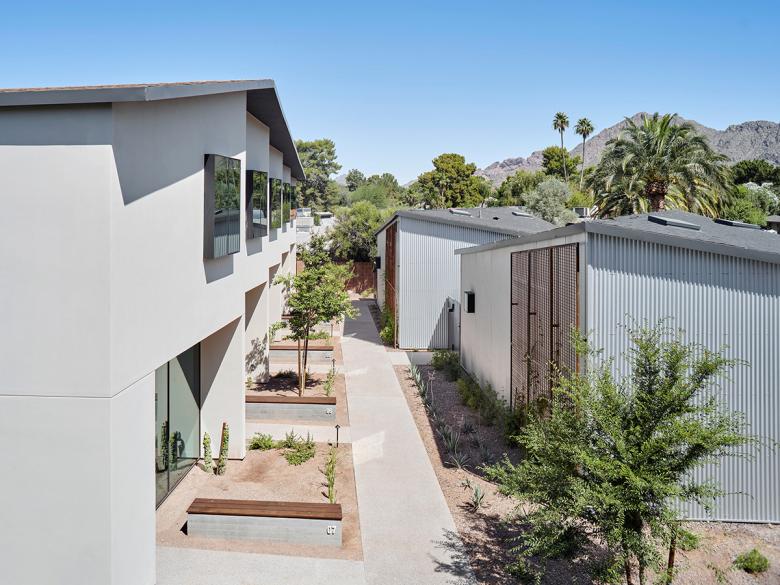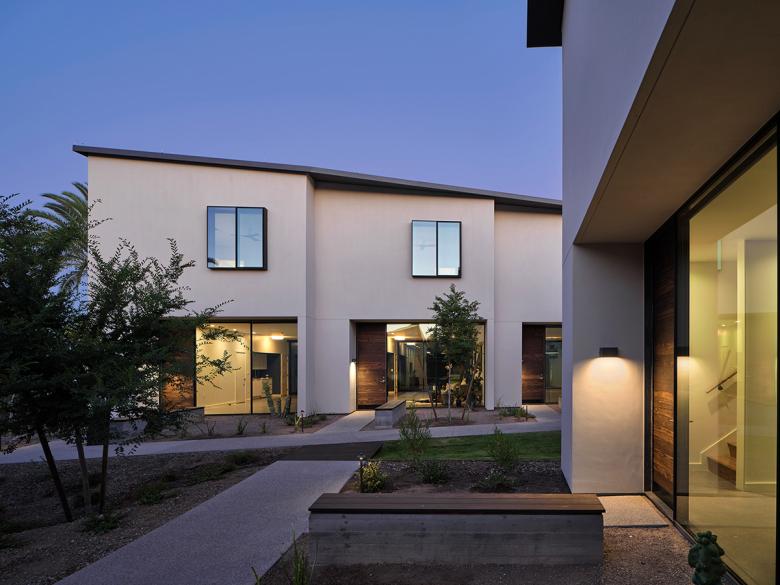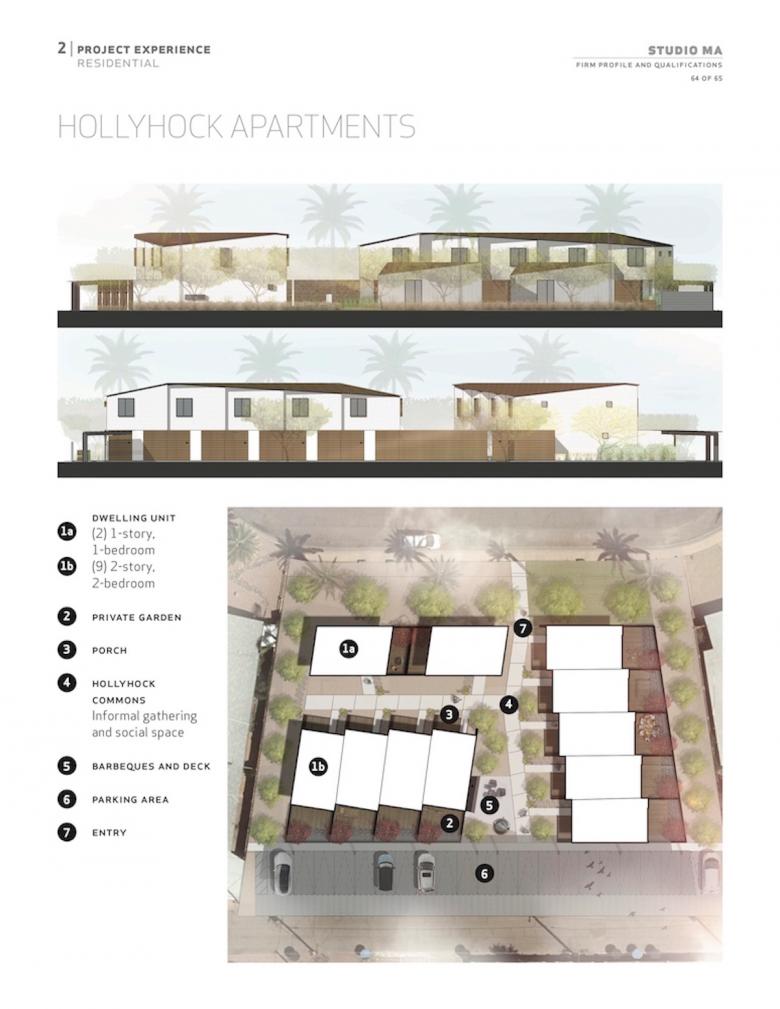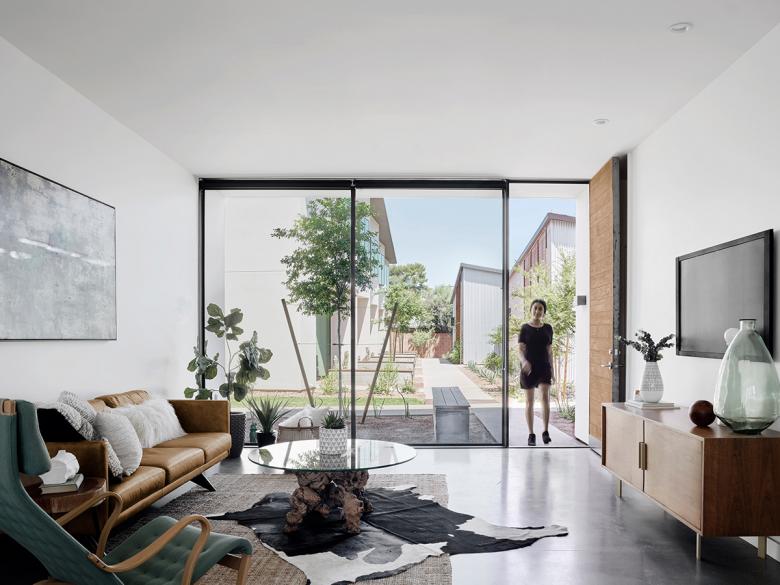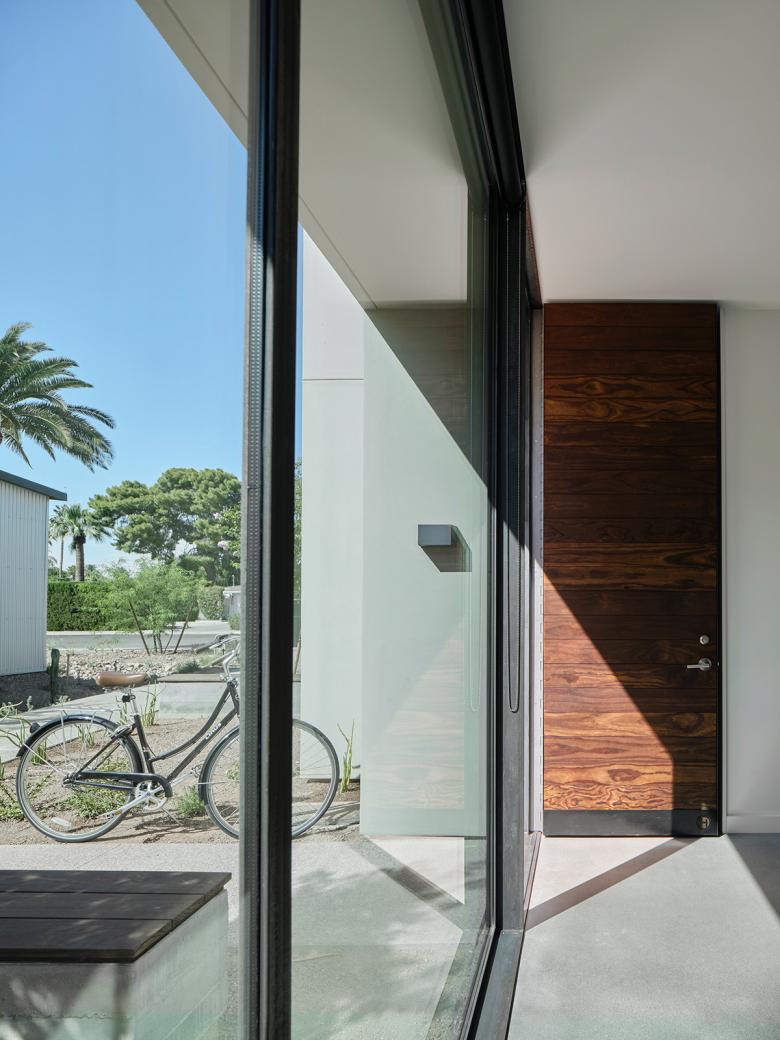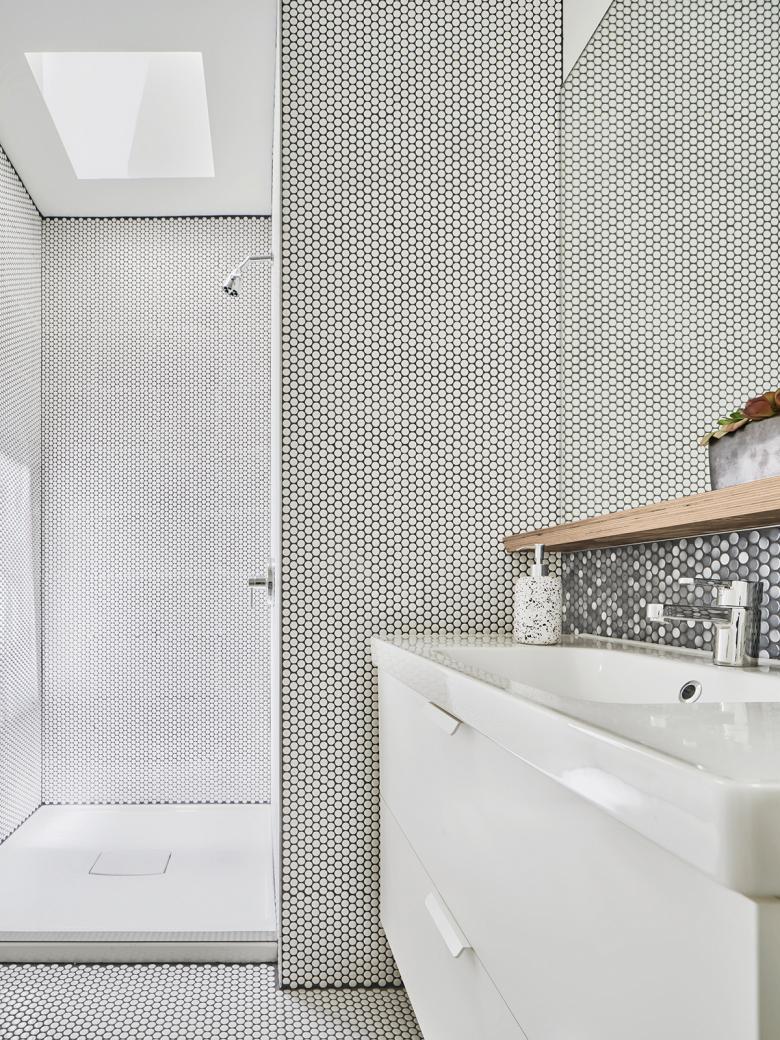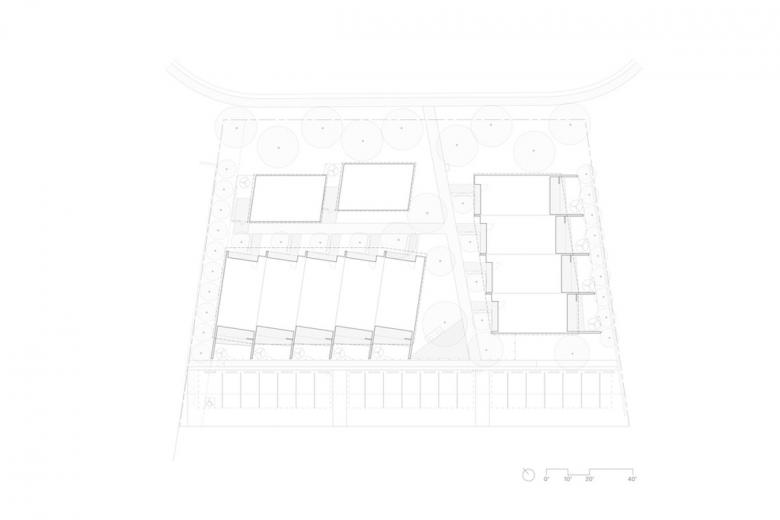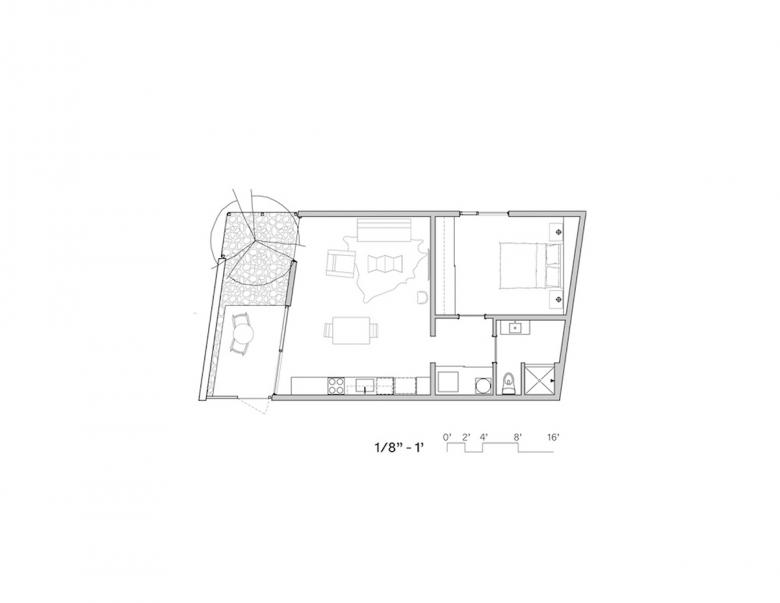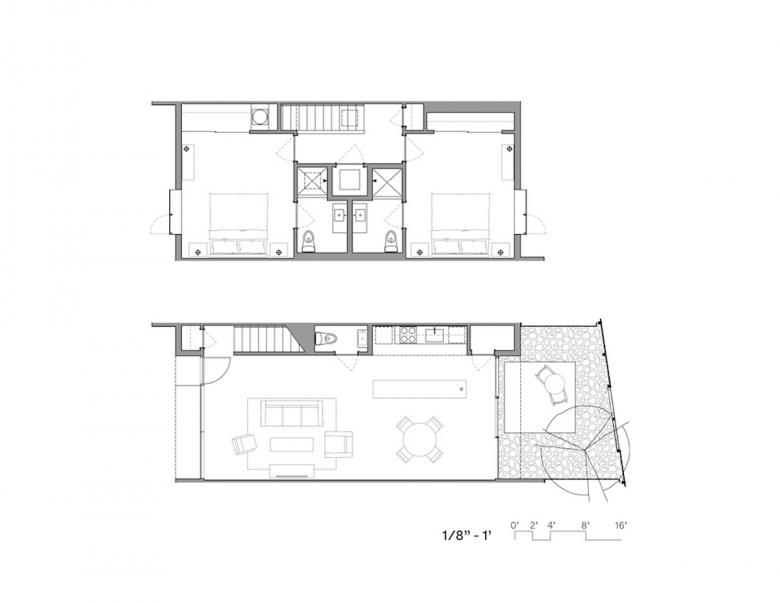US Building of the Week
The Hollyhock
Studio Ma
28. september 2020
Photo: Roehner + Ryan
The Hollyhock sits in the midst of an urban landscape that is typical of Phoenix and Scottsdale: streets lined with single-family houses and the occasional gated community. But with its townhouses oriented about a community commons. The Hollyhock is a departure from the norm. Studio Ma answered a few questions about their design of the speculative housing development.
Location: Phoenix, Arizona, USA
Client: Hollyhock Apartments, LLC
Architect: Studio Ma
- Design Principal: Christiana Moss, FAIA
- Project Architect: Christopher Alt, RA
- Project Manager: Kelly Vanyo
MEP/FP Engineer: Peterson Associates Consulting Engineers
Landscape Architect: Colwell Shelor Landscape Architects LLC
Lighting Designer: Peterson Associates Consulting Engineers
Civil Engineer: Jacobs Wallace, LLC
Contractor: Construction Zone
Site Area: 33,000 sf
Building Area: 13,000 sf
Photo: Roehner + Ryan
Please provide an overview of the project.A speculative infill housing development in the Arcadia neighborhood of Phoenix, The Hollyhock's eleven modern, comfortable and sophisticated townhouses are organized around private gardens, lush walkways, and a community commons. Cost-conscious construction help make the one- and two-story living units economically attainable, and the highly sustainable design incorporates high-performing insulation and supports energy efficiency and low water use. Construction and finish materials including galvanized metal, sustainably harvested wood, and exposed concrete floors comprise a "long lifespan palette," representing reduced embedded energy and carbon associated with both construction and occupancy phases.
The clients, a brother-sister developer team, were eager to see what could be accomplished on this infill site in terms of sustainable and contextually relevant housing for this architecturally noteworthy neighborhood. The highly productive relationship with the client emphasized "elevated urban design" and the desire to create a sense of community.
Drawing: Studio Ma
What are the main ideas and inspirations influencing the design of the building?Most uniquely, The Hollyhock presents a "small village" feel on a small infill site, with private gardens, lush walkways, and a community commons available for the enjoyment of residents. At the same time, the planning and design prioritize privacy, views, and open floor plans, maximizing the property’s potential
The project also embodies one of Studio Ma’s core values, "leadership through partnership." A close collaboration with general contractor The Construction Zone made it possible for the team to pledge to deliver a unique rental offering of exceptionally high value, incorporating market-leading aesthetics, functionality and performance for this long-term family investment, with sophisticated architectural details rarely seen in apartments in any market.
Photo: Roehner + Ryan
How does the design respond to the unique qualities of the site?The Hollyhock is located in Phoenix’s noteworthy Arcadia district, in the foothills of the Camelback Mountain. The district’s esteem and lineage draw from landmark modern homes by Frank Lloyd Wright and Al Beadle, among others. This demanded a prestigious architectural signature as well as a design responsive to the context and neighborhood scale.
Drawing: StuPhoto: Roehner + Ryandio Ma
Was the project influenced by any trends in energy-conservation, construction, or design?The Hollyhock incorporates sustainable and regenerative building techniques. Designed for exceptional insulation, energy efficiency and low water use, the project features an economical and environmentally sound, long-lifespan palette of materials including high-performance low-emissivity (low-E) glass, insulated faux stucco, galvanized metal, natural woods and exposed concrete floors that help cool interiors. The natural woods and metals reduce carbon emissions associated with typical construction, and the landscaping is predominantly xeriscape, requiring little irrigation.
Additionally, the project leverages principles of passive design to take advantage of the region’s sunlight and prevailing breezes, enhancing occupant comfort while reducing operating costs and energy consumption. A new parking shade canopy on site is designed for the future addition of solar photovoltaic panels, with charging stations for electric vehicles.
